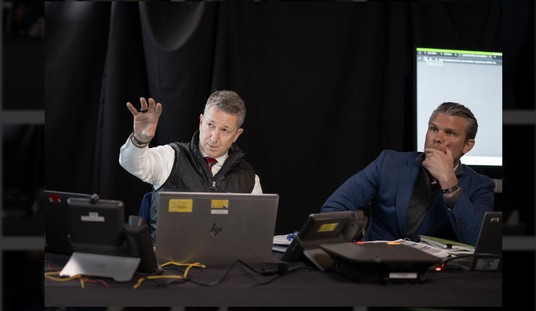This week in history witnessed the launch of a daring and amazing campaign dedicated to defending and liberating Christian lands from Islam.
The year was 1442. After having suffered countless atrocities from the invading Turks, “everyone [in the West] spoke of making war on the infidels and driving them out of Europe” — and it was entirely due to the martial exploits of John Hunyadi, the Transylvanian-born hero who had singlehandedly bested the Turks in several recent engagements.
After putting an army of some 25,000 Christians together — mostly from Hungary, Poland, Wallachia, Moldavia, and Serbia — Hunyadi took the initiative by doing the unthinkable: he led them into Turkish-held territories at the end of September 1442 — when campaigning season was supposed to end, due to the usual harsh weather, not begin.
Hunyadi was always in the vanguard, a day ahead of the main army and Hungarian king, Ladislaus III, its formal leader. The Christian army marched south of the Danube, scourging the Turks in every encounter and liberating Christian town after town. The deeper the Christians penetrated into subject Ottoman territory, the larger their army became, as overjoyed Christian subjects, casting off the yoke of their Muslim masters, rushed to join and augment the ranks of their saviors.
After Hunyadi took Niš in early November, and in an attempt to trap and annihilate the Christians, three different Muslim armies converged on the town. With lightning speed, Hunyadi defeated all three, one by one, before they could unite.
Related: Today in History: Islam Sacks Constantinople
By late November, the Christians had reached Sophia in Bulgaria — more than 450 miles from whence the Crusaders had first started marching. Considering that Sophia had been under Islamic rule for more than half a century, since 1382, the long-oppressed “Bulgarians went wild with joy.” Liberator and liberated reconverted the mosques back into churches and gave thanks in them.
The long cherished dream of freedom from Islamic domination was becoming palpable:
The Balkan peoples became excited by the hope of their liberation which appeared close. … [T]he local population welcomed them everywhere with gifts and food, so that the soldiers hardly used the supplies they had brought along. The camp of the king became filled with Bulgarians, Bosnians, Serbians, and Albanians. … According to the sources from that time, the population was very much set against its [Turkish] oppressors.
The victorious Crusaders next set their sights on Adrianople (Edirne) — the very capital of the Ottoman Empire, and the sultan’s own seat of power. Once a beautiful Greek city, Adrianople was now a major center of the Muslim slave trade. Its markets were so inundated with Christian flesh that children sold for pennies, “a very beautiful slave woman was exchanged for a pair of boots, and four Serbian slaves were traded for a horse.”
Outside the Ottoman capital often lay the remains of the unwanted or undesirable. As Bartolomeo de Giano had observed four years earlier, “so great a quantity of [European] bodies lay consumed, partially rotted, partially devoured by dogs, that it would seem unbelievable to anyone who had not seen it with their own eyes.”
Between the marching Christian army and the Thracian plain leading to Adrianople stood the vast and snow-covered mountains of the Balkan range. Although it was by now December — when no one campaigned — Hunyadi forced the march through the frigid cold and harsh terrain, even as panicked Turks did everything to stall him, including blocking the already narrow passes with stones and felled trees and creating walls and narrow paths of slippery ice.
Still, the Christians came on. Before long, the sultan was advised to retreat from his capital, so terrified were the Turks.
On December 12, 1443, Hunyadi and his advance cavalry got entrapped at the Zlatitsa Pass; many perished of cold and starvation. On arriving to ambush them, the grand vizier remarked with contempt that he owned more cows than the Christian army had men. After haranguing his exhausted and frozen men with words of violence and hope, “Hunyadi again led that battle himself, and, despite being outnumbered, drove the Turks back to their fortifications in the mountains.”
Due to the fierce and unrelenting winter, and with their supply lines stretched thin, Hunyadi finally ordered a withdrawal — and not a moment too soon. Many men had died of starvation, and many more would die on the long trek back home. Sources record the emaciated men “staggering from side to side as though about to fall; with their pallid faces and sunken eyes, they are more like skeletons than humans.”
To make the march easier, all worn-down horses were killed and eaten, and all heavy weapons and non-essential equipment were buried or burned, lest the Turks get them. The skeleton army finally arrived in Buda, led by their king — barefooted, singing Christian hymns, and brandishing more captured Islamic banners. After receiving a hero’s welcome, they fell to their knees and gave thanks in the main cathedral for their victories.
“This march of the crusaders,” historian Patrick Balfour correctly observes, “was a military feat seldom paralleled in history.” It is now known as “the Long Campaign,” as the Christian army was in nonstop action for more than six months — most of which was in winter and hundreds of miles deep into enemy territory — at a time when campaigns usually lasted no more than two months and rarely went past fall. It consisted of seven major battles, all Christian victories.
Reflecting on what had originally seemed like Hunyadi’s “insane strategy” of taking the war to the much stronger enemy, Romanian historian Camil Mureșanu writes,
He was aware of the plans of conquest of the Ottomans and understood that limiting himself to defense meant to expose the country to constant incursions and plunders and to harassment that would eventually lead to exhaustion. That is why he preferred to take the offensive, involving deep penetration into enemy territory, to defeat the adversary decisively on his own territory, thus putting an end to the war that had been going on, with interruptions, for more than half a century. His preference for the offensive was also justified by the support that he was certain he would find in Ottoman lands from the subject [Christian] populations: Romanians, Serbians, Bulgarians, who were waiting for help to come from the north for their liberation.
At any rate, “never had the Muslims suffered so much from the cunning and malice of the gâvur [infidels],” wrote a Turkish chronicler of the Long Campaign. Not only was “the Ottoman world terrified” — with Muslim cities everywhere hunkering down and refortifying themselves — but even the Mamluk sultan in distant Egypt across the Mediterranean made preparations “to defend Cairo if they heard that John Hunyadi entered Asia Minor.”
This article was adapted from Raymond Ibrahim’s new book, Defenders of the West: The Christian Heroes Who Stood against Islam.










Join the conversation as a VIP Member